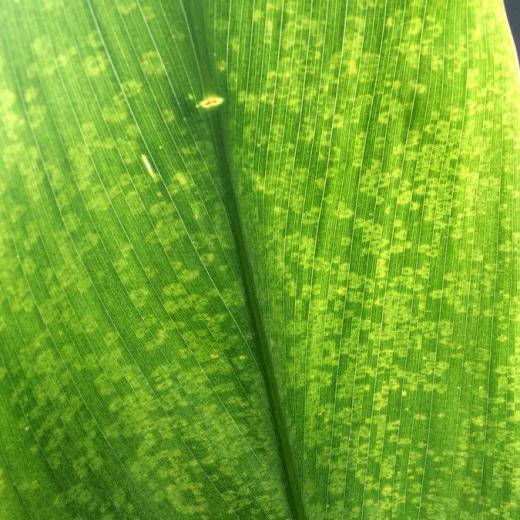What are Viroids?
 Michael Anissimov
Michael Anissimov
Viroids are small RNA particles which infect plants. Viroids are remarkable for their extremely tiny size (only a few hundred nucleic acid bases, the smallest with only 220) relative to the larger viruses, which contain at least 2,000 bases. Viroids were discovered and given their name by Theodor Diener, a plant pathologist at the Agricultural Research Service in Maryland, in 1971. Viroids are a subviral agent about 80 times smaller than typical viruses. Their discovery was considered a major breakthrough in 20th century biology.
Unlike viruses, viroids lack a protein coat, and don’t even encode any protein products in their structure. Traditional viruses hijack the central genetic machinery of the cell and cause it to pump out copies of the virus. Viroids instead take control of RNA polymerase II, an enzyme that synthesizes messenger RNA within the cell, and uses that to produce copies of itself. Prior to the discovery of viroids, it was thought that agents lacking protein could never infect any living thing. Their discovery proved this wrong.
Most viruses must wear a protein coat to protect themselves from being digested by the powerful enzymes found inside the cells of other organisms. Viroids avoid these enzymes by masquerading as components of the host organism’s cells.

Viroids were discovered in the process of investigating a potato disease called potato spindle disease. This caused the tubers to come out all spindly and twisted. It was largely harmless, but made potatoes look bad. Because its effect was just cosmetic, it took a while before researchers investigated the disease closely. They found it difficult to isolate an agent responsible for the disease. After six years of painstaking work, the miniscule viroids were discovered, turning the accepted dogma about pathogen size on its head.

The first viroids were actually isolated from tomato plants, which take only two weeks to get infected, whereas potatoes which require two years. After high-speed centrifugation, the traditional method of extracting viruses, failed to isolate appreciable amounts of any virus, the scientists turned to other methods. They combined samples of infected plant matter with enzymes that selectively dissolve RNA, DNA, and proteins. After exposure to DNA and protein-dissolving enzymes, the mixture was still able to infect plants. Only after using an RNA-dissolving enzyme did its virulent power stop.
Unlike normal viruses which afflict organisms by inserting themselves into chromosomes and modifying the proteins which are produced, the viroid attacks organisms simply be selectively inhibiting the expression of certain genes, similar to RNA interference, a cutting-edge medical technique. After a couple weeks or a couple years, depending on the species, plants grow stunted.
The discovery of viroids is an indication that established wisdom in science should be challenged when appropriate. Starting off as a menace, viroids are now being investigated for agricultural applications, such as the dwarfing of citrus trees.
AS FEATURED ON:
AS FEATURED ON:












Discussion Comments
@bythewell - I imagine a little bit of hypothesizing would have happened as well in this case. I doubt they had a way to look at viroids in the 1970s so they would have had to put the evidence together in a way that makes sense.
Viroids and prions and other diseases are still largely mysterious, just because it's not like we can watch them directly live their "lives" like we might with a larger organism.
@Ana1234 - It sounds like what they did was analyze the components of infected tissue and compare them to the components of uninfected tissue to see what the difference was. It may have been long and difficult, but in the end they would not have been able to discount the evidence by calling on the "prevailing wisdom" of the time.
That's the point of science. It's not about dogma. It's about trying to find the truth by eliminating all other possibilities.
It's incredible that they even managed to discover these things. I mean, not only was the prevailing wisdom telling them that there was nothing there to be found, the viroids themselves must be very difficult to look for if they are that tiny and can disguise themselves from the plant itself.
Not to mention that plant pathology is probably a difficult field because there's no way to ask the patients how they feel or observe behavior that might give away clues.
Post your comments